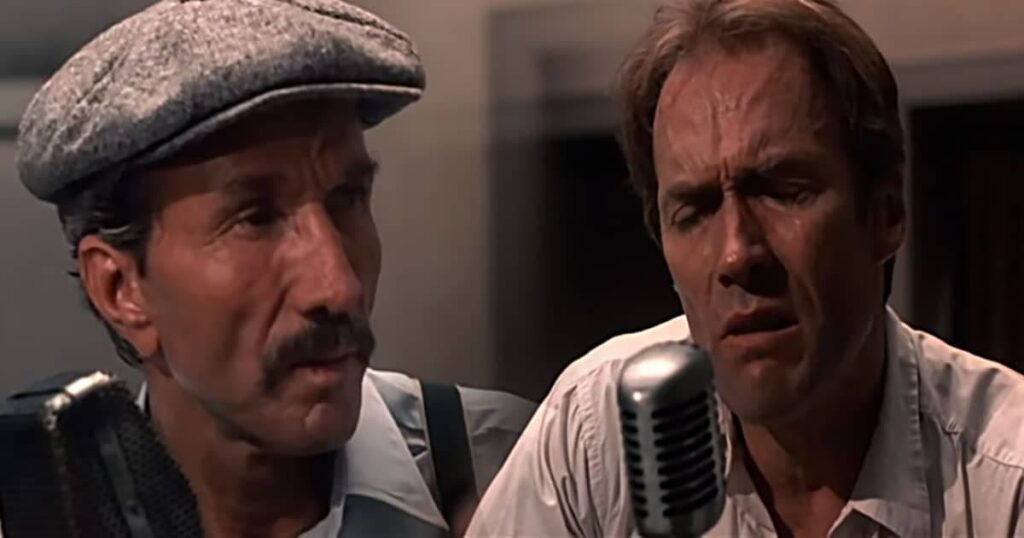
The Roustabout’s Lament: Marty Robbins’ Delightfully Dark Tale of Comeuppance
For those of us who recall the golden era of country and western music—a time when a singer’s voice could transport you from a smoky honky-tonk to a dusty Western trail—the name Marty Robbins holds a special, resonant place. While his legendary stature is often cemented by the epic, sweeping narratives of songs like “El Paso”, his repertoire was gloriously diverse, dipping into rockabilly, Hawaiian tunes, and, in this case, a slice of good-natured, traditional folk-country comedy. The song in question is “In the Jailhouse Now”, a classic cautionary tale that brings a knowing smile to the lips of anyone who ever believed they could outsmart the system.
The version by Marty Robbins that most of us remember, with its infectious, rolling rhythm and playful vocals, was released in 1959 on his seminal album, Gunfighter Ballads and Trail Songs. It’s important to note right from the start that this wasn’t an original composition by Robbins; it’s a venerable piece of Americana. The definitive, classic version was by the “Father of Country Music,” Jimmie Rodgers, who recorded it way back in 1928. Robbins‘ take, however, brought a fresh vitality to the tune, fitting perfectly alongside the Western sagas on the album, acting as a humorous, grounded counterpoint to the dramatic tales of gunfighters and doomed lovers.
Chart Performance and The Song’s History
Unlike some of his bigger crossover hits, Robbins‘ version of “In the Jailhouse Now” didn’t storm the charts, which is fitting for a song that’s more about timeless folklore than commercial frenzy. However, it’s worth recalling the history of the song’s massive country impact. The most commercially successful rendition came in 1955 by Webb Pierce, whose version soared to No. 1 on the Billboard Country Chart for twenty-one non-consecutive weeks, making it one of the biggest hits of the decade. Robbins’ decision to record the song several years later was a nod to this deep country heritage, a way of honoring the playful tradition of the “hobo song” and the folk blues style pioneered by Rodgers. His performance—full of zest and a twinkle in the eye—is pure, unadulterated musical fun.
The Story and Meaning of the Ballad
The song itself is a delightful piece of musical schadenfreude. It’s a series of vignettes centered around a narrator who revels in the misfortunes of his former associates, now locked away. The meaning is wonderfully simple and timeless: Crime doesn’t pay, and those who brag the loudest about their schemes are often the first to face the music. The lyrics paint vivid, cinematic pictures of scoundrels caught in the act. We hear about the “rounder” caught by the law, the gambler who thought he had the world in his hand but is now playing solitaire in a cell, and the character “Poor Boy”, an inveterate thief who is repeatedly “in the jailhouse now.” The narrator, with his upbeat, almost gleeful delivery, positions himself as the only wise one, the only one who learned his lesson and is therefore not behind bars.
For those of us who came of age during that time, this song—whether heard from Rodgers, Pierce, or Robbins—was a lighthearted but firm reminder of moral order. It speaks to a bygone era of simpler country justice, where right was right and wrong landed you in the local lockup. The sing-song, almost vaudeville quality of the melody, coupled with Robbins‘ smooth baritone and that signature, joyful response of the backup singers chiming “He’s in the jailhouse now!” creates an irresistible feeling of nostalgia. It’s not a tear-in-your-beer ballad; it’s the sound of a community chuckling at the predictable downfall of a rogue, a musical nod to the fact that every dog eventually has his day—in this case, in a concrete cell. Listening to it again today, you can almost hear the train whistle in the distance, a ghostly echo of Jimmie Rodgers‘ original blue yodel, reminding us that some songs, and some truths, simply never fade away. It’s a track that captures the spirit of the old West and the classic country aesthetic better than any academic treatise.